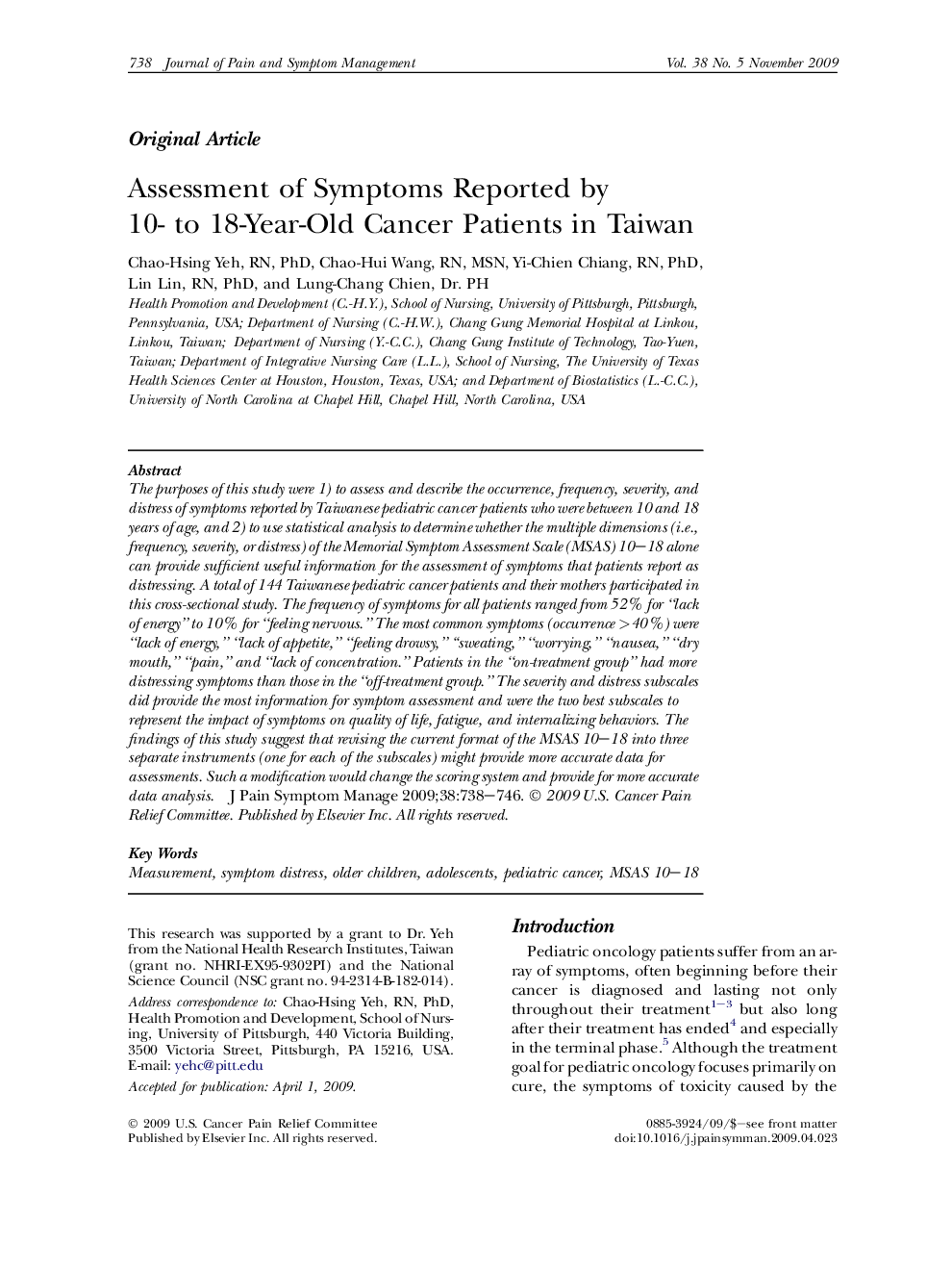| Article ID | Journal | Published Year | Pages | File Type |
|---|---|---|---|---|
| 2730594 | Journal of Pain and Symptom Management | 2009 | 9 Pages |
The purposes of this study were 1) to assess and describe the occurrence, frequency, severity, and distress of symptoms reported by Taiwanese pediatric cancer patients who were between 10 and 18 years of age, and 2) to use statistical analysis to determine whether the multiple dimensions (i.e., frequency, severity, or distress) of the Memorial Symptom Assessment Scale (MSAS) 10–18 alone can provide sufficient useful information for the assessment of symptoms that patients report as distressing. A total of 144 Taiwanese pediatric cancer patients and their mothers participated in this cross-sectional study. The frequency of symptoms for all patients ranged from 52% for “lack of energy” to 10% for “feeling nervous.” The most common symptoms (occurrence >40%) were “lack of energy,” “lack of appetite,” “feeling drowsy,” “sweating,” “worrying,” “nausea,” “dry mouth,” “pain,” and “lack of concentration.” Patients in the “on-treatment group” had more distressing symptoms than those in the “off-treatment group.” The severity and distress subscales did provide the most information for symptom assessment and were the two best subscales to represent the impact of symptoms on quality of life, fatigue, and internalizing behaviors. The findings of this study suggest that revising the current format of the MSAS 10–18 into three separate instruments (one for each of the subscales) might provide more accurate data for assessments. Such a modification would change the scoring system and provide for more accurate data analysis.
